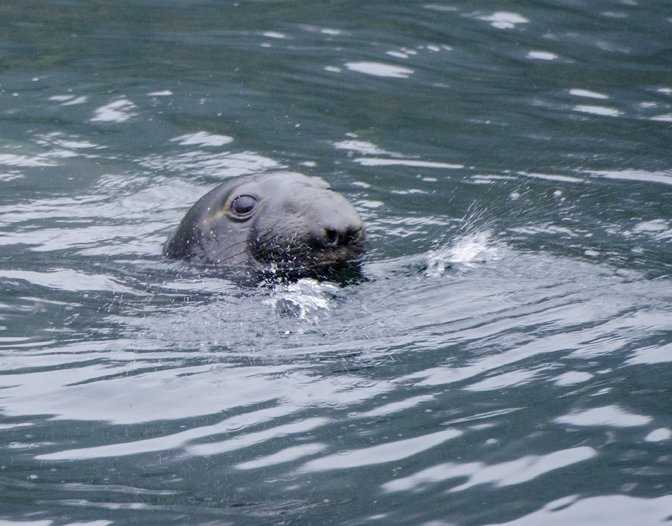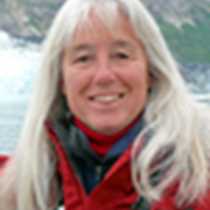National Geographic Sea Lion had a smooth transit across Hecate Strait and back into the protected, glacier-cut channels of the Inside Passage. We awoke in McKay Reach north of Butedale, between Gribbel and Princess Royal Islands.
Butedale is an old fish processing site. Many canneries were located near salmon streams. Herring oil was rendered here year-round. Dilapidated buildings and a waterfall were interesting photo subjects. We spoke with the owner by radio, asked some questions and learned a little about the history of the area. As part of their up-coming Royal Tour, Their Royal Highnesses the Duke and Duchess of Cambridge will officially endorse this area (6.4 million hectares) of coastal British Columbia temperate rain forest under The Queen’s Commonwealth Canopy initiative. This will help conserve the forest for future generations. Plans for the future of Butedale are still being considered.
We paused for a few surface-active humpback whales in Graham Reach. We saw breaches, tail throws, and fin slapping. An exciting moment occurred when we spotted an elephant seal bobbing in the water, watching us with big brown eyes as we coasted by.
Later in the morning, National Geographic photographer, Rich Reid, gave a presentation about time-lapse photography. He showed some of his spectacular composites of many trips on National Geographic voyages.
We passed Boat Bluff lighthouse, a magnificent setting on Sarah Island. It was established in 1907 and is the last lighthouse on the British Columbia coast to be staffed by resident keepers.
The Global Gallery was set up in the lounge after lunch. Naps, on-board exercise, reading, and photo editing were options for the afternoon. Later, Ashley gave a presentation about Ed Ricketts (dear friend and colleague of John Steinbeck). He collected intertidal organisms in the 1930s and 1940s in the Pacific Northwest, from Vancouver Island to Southeast Alaska, including the Queen Charlotte Islands (now known as Haida Gwaii).
We had commenced the cocktail hour and were preparing for recap when a pod of killer whales showed up in Seaforth Channel. So we forewent recap and went out on the bow with our cameras to enjoy close views of these magnificent animals. We were delighted by their antics – breaching, and tail-slapping. Another great photo opportunity!
During dinner we threaded through Lama Passage and by Bella Bella, also known as Waglisla, a native town on Campbell Island. It is home to the Heiltsuk people. The navigable channel is quite narrow here.
After dinner Sharon prepared us for low-light photography of the Namgis dancers in the Big House in Alert Bay, our next destination as we continue our southward migration.










